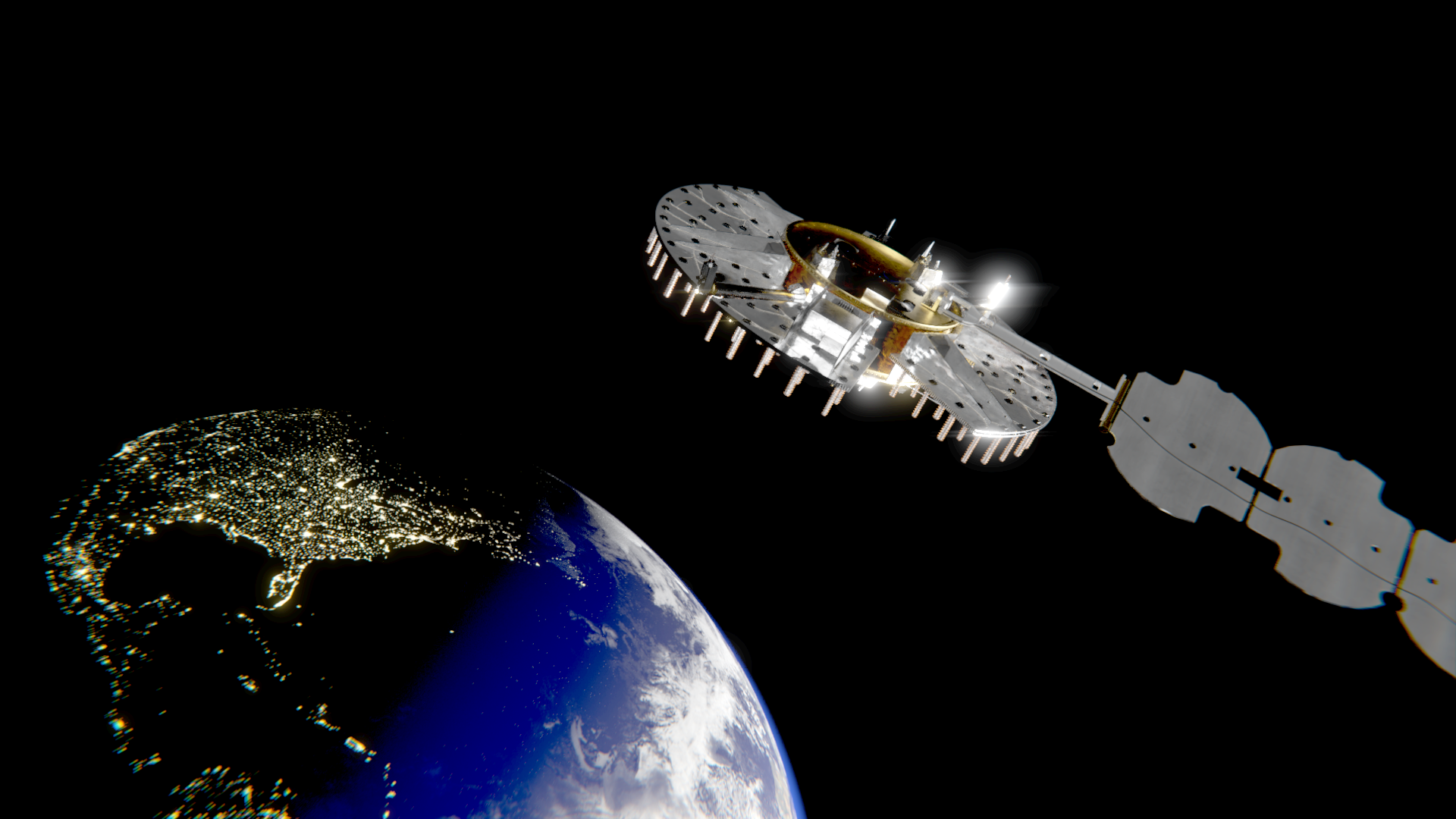Don't forget the lunar eclipse
Navigation
Install the app
How to install the app on iOS
Follow along with the video below to see how to install our site as a web app on your home screen.
Note: This feature may not be available in some browsers.
More options
-
 BigFooty AFLW Notice Img
BigFooty AFLW Notice Img
AFLW 2025 - AFLW Trade and Draft - All the player moves
-
Mobile App Discontinued
Due to a number of factors, support for the current BigFooty mobile app has been discontinued. Your BigFooty login will no longer work on the Tapatalk or the BigFooty App - which is based on Tapatalk.
Apologies for any inconvenience. We will try to find a replacement.
You are using an out of date browser. It may not display this or other websites correctly.
You should upgrade or use an alternative browser.
You should upgrade or use an alternative browser.
Astronomy General Space Discussion
- Thread starter Dannnnnnnnnn
- Start date
- Tagged users None
🥰 Love BigFooty? Join now for free.
Did you buy one? Any tips?I am going to buy my first Telescope. Any recommendations? I would like something powerful enough to catch a glimpse of the Andromeda Galaxy.
Intermediate | Astronomy Alive
- Oct 1, 2014
- 6,731
- 14,538
- AFL Club
- Hawthorn
Making food on Mars.

 theconversation.com
theconversation.com

The food systems that will feed Mars are set to transform food on Earth
Agricultural technologies to grow food on Mars can help address climate change, sustainability and food scarcity challenges.
 theconversation.com
theconversation.com
Log in to remove this Banner Ad
- Oct 1, 2014
- 6,731
- 14,538
- AFL Club
- Hawthorn
The hunt for Planet X is on - I'm keeping Pluto in the family, so it's the 10th planet for me.

 www.sciencealert.com
www.sciencealert.com

A Giant Planet Seems to Be Lurking Somewhere in Our Solar System
Our Solar System is a pretty busy place.
X_box_X
VFL is taking over.
Fo those of you slightly disappointed with how 'non-cool' or 'spacey!' most satellites look....
NAVIGATION TECHNOLOGY SATELLITE – 3 (NTS-3) – Air Force Research Laboratory

NAVIGATION TECHNOLOGY SATELLITE – 3 (NTS-3) – Air Force Research Laboratory

RubyLovesTheDees
Senior List
- Feb 24, 2020
- 189
- 212
- AFL Club
- Melbourne
- Other Teams
- Dragons
I'm obsessed with the JWST
NGC 1365

NGC 1365

RubyLovesTheDees
Senior List
- Feb 24, 2020
- 189
- 212
- AFL Club
- Melbourne
- Other Teams
- Dragons
Not sure where to put this, but has anyone read, Satellite Communication Systems Engineering or Space Mission Analysis Design? I want to learn more about Satellite software.
The SpaceX Starship just blew up. I opened Youtube and the launch happened to be minutes away so I saw it live. It was the first test of both the Super Heavy booster and Starship in the same flight. It successfully launched, and at two minutes into the flight, the rocket started flipping end-over-end when the first stage was supposed to separate. The explosion that destroyed the rocket appeared to be deliberate from the range safety officer to prevent the spacecraft flying uncontrollably.
The live stream commentators were talking it up as s success, with anything after clearing the tower as icing on the cake, but it's a disappointment. Your rocket exploding is not a good test. They'll learn from it though.
The live stream commentators were talking it up as s success, with anything after clearing the tower as icing on the cake, but it's a disappointment. Your rocket exploding is not a good test. They'll learn from it though.
- Oct 1, 2014
- 6,731
- 14,538
- AFL Club
- Hawthorn
This is a great video talks about the problems with Starships first launch.
It may be that some of the engine failures were due damage sustained during launch. Bad decision to not to use a thrust divertor.
Added - Eric Berger at Ars waxes lyrically about the launch.

 arstechnica.com
arstechnica.com
It may be that some of the engine failures were due damage sustained during launch. Bad decision to not to use a thrust divertor.
Added - Eric Berger at Ars waxes lyrically about the launch.

So what was that? Was Starship’s launch a failure or a success?
SpaceX’s development process is messier, but it’s also much faster.
 arstechnica.com
arstechnica.com
Last edited:
- Aug 21, 2016
- 19,137
- 32,801
- AFL Club
- Geelong
- Other Teams
- Oldham
This is a great video talks about the problems with Starships first launch.
It may be that some of the engine failures were due damage sustained during launch. Bad decision to not to use a thrust divertor.
Added - Eric Berger at Ars waxes lyrically about the launch.

So what was that? Was Starship’s launch a failure or a success?
SpaceX’s development process is messier, but it’s also much faster.arstechnica.com
So the debris hitting the rocket on launch might have mostly caused the problems? The lack of thrust from the damaged engines affected the trajectory. It never reached the planned separation altitude and there was also a prerequisite that the main engines needed to be shut down - so the separation command was never given. Space X hit the self destruct button. I wonder if they had the option to shut down the main engines and separate anyway. Almost for the LOLZ and gathering more data.
- Oct 1, 2014
- 6,731
- 14,538
- AFL Club
- Hawthorn
Looking at the video it would certainly appear that's a likely cause, with a series of cascading failures following the concrete damage. Then the kaboom! I don't know if separation can be undertaken at lower speeds and altitudes.So the debris hitting the rocket on launch might have mostly caused the problems? The lack of thrust from the damaged engines affected the trajectory. It never reached the planned separation altitude and there was also a prerequisite that the main engines needed to be shut down - so the separation command was never given. Space X hit the self destruct button. I wonder if they had the option to shut down the main engines and separate anyway. Almost for the LOLZ and gathering more data.
- Aug 21, 2016
- 19,137
- 32,801
- AFL Club
- Geelong
- Other Teams
- Oldham
Looking at the video it would certainly appear that's a likely cause, with a series of cascading failures following the concrete damage. Then the kaboom! I don't know if separation can be undertaken at lower speeds and altitudes.
If that's the case it sounds like launching using a thrust diverter should fix most of the problems. Landing on the moon and relaunching would be much easier now than in the Apollo days.
But landing on Mars on an unprepared surface with a ship big enough to carry people is another level of challenge. The idea of taking off from Mars for returning people to Earth might have been set back by the problems with this latest Space X launch.
- Oct 1, 2014
- 6,731
- 14,538
- AFL Club
- Hawthorn
Yes. The destructiveness depends on the amount of thrust and Starship is a big beastie, in fact the biggest when it's all stacked up. How that works out on other celestial surfaces we will have to wait and see. Mars dust is allegedly very fine, with only one third G it's liable to whip up a dust storm.If that's the case it sounds like launching using a thrust diverter should fix most of the problems. Landing on the moon and relaunching would be much easier now than in the Apollo days.
But landing on Mars on an unprepared surface with a ship big enough to carry people is another level of challenge. The idea of taking off from Mars for returning people to Earth might have been set back by the problems with this latest Space X launch.
The James Webb Telescope has found stuff which has put the big bang theory in doubt
Last edited:
- Oct 1, 2014
- 6,731
- 14,538
- AFL Club
- Hawthorn
The James Webb Telescope has found stuff which has put the big bang theory in doubt
No, it doesn't. It does show our understanding is not complete.

No, the Big Bang theory is not 'broken.' Here's how we know.
Researchers confirmed that the distant galaxies discovered by the James Webb Space Telescope are, indeed, perfectly compatible with our modern understanding of cosmology.
- Oct 1, 2014
- 6,731
- 14,538
- AFL Club
- Hawthorn
NASA has asked for tenders to reposition the Hubble Space Telescope (HST). Due to atmospheric drag its orbit has fallen 30km over the 30+ years it has been in orbit. If this continues it will start to become unstable in the 2030s.

 www.gizmodo.com.au
www.gizmodo.com.au

Gizmodo | The Future Is Here
Dive into cutting-edge tech, reviews and the latest trends with the expert team at Gizmodo. Your ultimate source for all things tech.
- Oct 1, 2014
- 6,731
- 14,538
- AFL Club
- Hawthorn
This one is a downer for space cadets. The brains ventricles expand over time in microgravity. The health significance of this is unknown, but it's made the space docs recommend 3 years between long duration space trips. .

 www.forbes.com
www.forbes.com
Having some form of artificial gravity, which at the present time can only be from centrifugal forces, would presumably prevent this.
Another potential problem that artificial gravity might prevent is thrombosis of the internal jugular vein (IJV), a problem rarely seen on Earth, but has occurred in one astronaut who had no medical reason for having it. Follow up ultrasound studies done on the ISS showed significant blood flow reduction in the left IJV in astronauts but less so on the right. A few astronauts exhibited reverse flow of the IJV, which may be the precursor to the thrombosis.
Add to it the significant bone loss and muscle wasting with microgravity, means a trip to Mars may not be the most healthy thing for the crew. I'm cancelling my trip and asking for my deposit back. Some form of rotating compartment/centrifuge may be necessary to maintain astronauts health on trips to Mars. I don't think Mr Musk is planning for this, but perhaps should.
Then there is the radiation, but that's another story.

Astronaut’s Brains Need Three Years Off Between Trips, Say Scientists
Researchers studied 30 astronauts before and after space travel and found that it takes about three years between flights for the ventricles in the brain to recover.
 www.forbes.com
www.forbes.com
Having some form of artificial gravity, which at the present time can only be from centrifugal forces, would presumably prevent this.
Another potential problem that artificial gravity might prevent is thrombosis of the internal jugular vein (IJV), a problem rarely seen on Earth, but has occurred in one astronaut who had no medical reason for having it. Follow up ultrasound studies done on the ISS showed significant blood flow reduction in the left IJV in astronauts but less so on the right. A few astronauts exhibited reverse flow of the IJV, which may be the precursor to the thrombosis.
Add to it the significant bone loss and muscle wasting with microgravity, means a trip to Mars may not be the most healthy thing for the crew. I'm cancelling my trip and asking for my deposit back. Some form of rotating compartment/centrifuge may be necessary to maintain astronauts health on trips to Mars. I don't think Mr Musk is planning for this, but perhaps should.
Then there is the radiation, but that's another story.
🥰 Love BigFooty? Join now for free.
- Oct 1, 2014
- 6,731
- 14,538
- AFL Club
- Hawthorn
Brian May (yes, the one from Queen) is an astrophysicist who was involved in the asteroid recovery mission Osiris Rex. He has written a book about the project. The asteroid, Bennu, was basically rubble held together by feeble gravity. This presented problems because they found piles of rubble, up to 10m covered the surface leaving very few places for the craft to land. His role was to geneate stereoscopic images of the surface using non stereoscopic images.

 www.space.com
www.space.com
You can read more about Osiris Rex mission at the NASA site. The first material is going to be returned a bit later this year before it heads off for another asteroid.

 www.nasa.gov
www.nasa.gov

Queen legend Brian May helped NASA ace its asteroid-sampling mission, new book reveals
Asteroid Bennu proved a trickster for NASA's OSIRIS-REx asteroid explorer, rewriting everything scientists had thought about space rocks.
You can read more about Osiris Rex mission at the NASA site. The first material is going to be returned a bit later this year before it heads off for another asteroid.

NASA's OSIRIS-REx Mission to Asteroid Bennu
OSIRIS-REx, the first U.S. mission to collect an asteroid sample in 2020, delivered the sample to Earth on Sept. 24, 2023.
- Oct 1, 2014
- 6,731
- 14,538
- AFL Club
- Hawthorn
Troubled about the meaning of life, the universe and everything? You're not alone, here is the 'Cosmic Question Mark' as seen by the James Web telescope in the near infrared.


 gizmodo.com.au
gizmodo.com.au


Gizmodo | The Future Is Here
Dive into cutting-edge tech, reviews and the latest trends with the expert team at Gizmodo. Your ultimate source for all things tech.
Chief
~ Shmalpha ~
- Admin
- #272
Oh man the UFOlogists will have a field day.Troubled about the meaning of life, the universe and everything? You're not alone, here is the 'Cosmic Question Mark' as seen by the James Web telescope in the near infrared.


Gizmodo | The Future Is Here
Dive into cutting-edge tech, reviews and the latest trends with the expert team at Gizmodo. Your ultimate source for all things tech.gizmodo.com.au
- Oct 1, 2014
- 6,731
- 14,538
- AFL Club
- Hawthorn
It's pretty amazing. But given enough data, you'll find everything. I've been looking through the Webb images and so far I've seen 3 Mother Theresa's, Elvis, and Peta Credlin stirring a cauldron.Oh man the UFOlogists will have a field day.
GreyCrow
Make me an Admin!
- Mar 21, 2016
- 91,960
- 155,275
- AFL Club
- Adelaide
- Other Teams
- Sturt, White Sox, Tasmania
I'm waiting for the 42 GalaxyIt's pretty amazing. But given enough data, you'll find everything. I've been looking through the Webb images and so far I've seen 3 Mother Theresa's, Elvis, and Peta Credlin stirring a cauldron.
- Oct 1, 2014
- 6,731
- 14,538
- AFL Club
- Hawthorn
NASA has lost contact with Voyager 2 after a command caused it to misposition itself and lose communication with Earth.

 theconversation.com
theconversation.com
All communication with Voyager 2 is via NASA’s Deep Space Station 43, the 70-metre radio dish at the Canberra Deep Space Communication Complex operated by CSIRO. They seem reasonably confident they will, one way or another regain control. The Voyager missions were designed to last 12 years but has continued on for nearly 4x as long as they journey beyond the solar system. Lets hope an alien intelligence doesn't find them, upgrade one, send it back and result in a really bad Star Trek movie.

Voyager 2 has lost track of Earth. Only one antenna in the world can help it ‘phone home’
The Voyager 2 spacecraft is 20 billion kilometres away and has lost track of Earth. A radio dish near Canberra is the only channel for re-establishing communication.
 theconversation.com
theconversation.com
All communication with Voyager 2 is via NASA’s Deep Space Station 43, the 70-metre radio dish at the Canberra Deep Space Communication Complex operated by CSIRO. They seem reasonably confident they will, one way or another regain control. The Voyager missions were designed to last 12 years but has continued on for nearly 4x as long as they journey beyond the solar system. Lets hope an alien intelligence doesn't find them, upgrade one, send it back and result in a really bad Star Trek movie.





